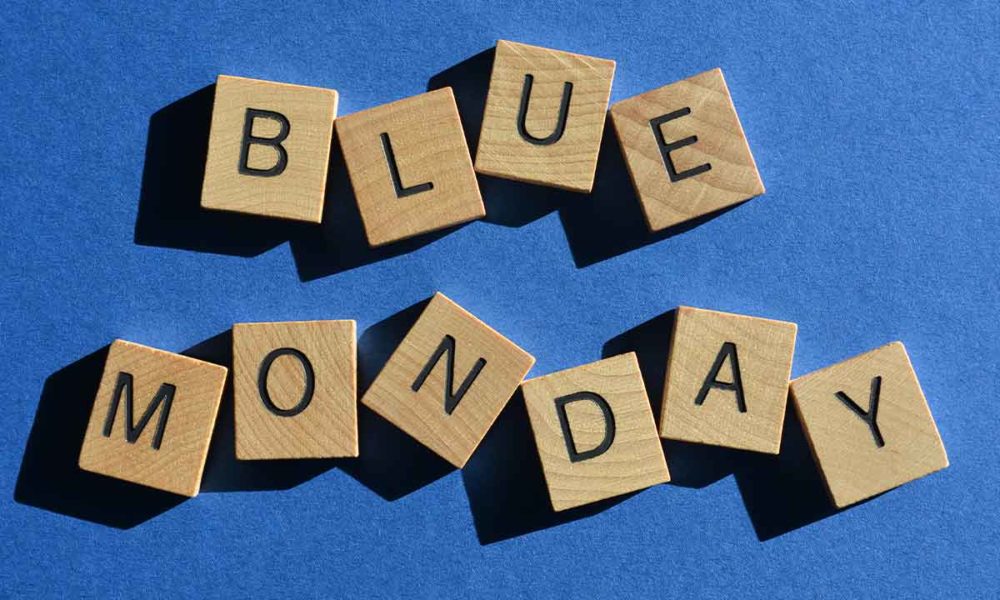
About a month and a half separate two Mondays that are diametrically opposite, from Cyber Monday to Blue Monday, of which for many are the best sales of the year (along with Black Friday, of course) to the day that, as we are constantly reminded, is the saddest day of the year. More than when your team loses the end of its life and the day that Chanquete died, with the aggravation that it is not for any particular reason, but for a set of circumstances, perhaps somewhat subjective.
We all lived the month of January with reasonable normality, until in 2005 it was published a press release signed by Cliff Arnall, then a professor at the Lifelong Learning Center, attached to the University of Cardiff, in which it was reported that an investigation had determined that the third Sunday of January was the saddest day of the year. And how could it be otherwise, a formula was even shown that would allow us to demonstrate it:

Original formula for calculating Blue Monday. Source: Wikipedia
In it they contemplated variables related to time consumption in daily life. Subsequently, a review of it was published in which a large part of the original values were discarded and, instead, the meteorology, the monthly salary, the debt that we maintain at that time, the time elapsed since Christmas was used. , Y elements so subjective and difficult to measure like the level of general motivation and the feeling of needing to do something. This second version is the formula that has prevailed so far.

Second calculation formula for Blue Monday. Source: Wikipedia
The first of the problems, before even going into analyzing the formula itself, is that as I have already mentioned before there are some values that are not quantifiable in a normalized way. I mean, how do you rate the level of frustration in life? On a scale from 0 to 100? At 1,000? And 1,000 is “I’m great” or “I’m down”? And the feeling of needing to do something? I always need to be in Punta Cana, at the wet bar by the pool with a piña colada in hand and thinking about the Nikkei food festival that I am going to have at lunchtime.
From the moment the formula that justified Blue Monday was published, andThe first critical voices began to appear with the same, with scientists from multiple fields related to it stating that it does not make any sense and that, therefore, it should not be taken into consideration.
Thus, shortly after the publication of the Blue Monday equation, it became known that in fact was part of an advertising campaign for Sky Travel, a popular online travel agency. The agency responsible for it had sent a press release to several academics, offering them a financial reward if they agreed to add their name to the alleged study, in order to give it greater credibility. In response to the signing of it by Cliff Arnall, Cardiff University called him a “retired part-time former professor.”
Enough years have passed since the controversy that originated around Blue Monday, that its supposed scientific explanation was discredited and, nevertheless, to this day it is still used And even if you Google “Blue Monday 2022”, the search engine will first return the date of this year’s sad Monday, next Monday, January 17th. Blue Monday is not real, but it has still become institutionalized.
As proof of this, at the time I am writing this news, I have received a (commercial) email Trying to sell me something to make my Blue Monday a little less blue, and maybe also a little less monday. And on the other hand, in a Twitch live that I listen to in the background, a conversation has started about Blue Monday, with people who did not know it and others who explained what it consists of and when it will take place.
It would be unfair not to acknowledge that The first weeks of January after Christmas can be a bit, let’s say, sad, because we come from the excesses and the pomp of the previous weeks, a few months of work await us until we can enjoy a vacation again, the bank accounts usually show Christmas expenses and while the northern hemispheres is peeling from the cold, in the southern hemisphere they are roasting from the heat. Thus, it makes sense to pose January with a month potentially sadder than others for many people, but from there to the Blue Monday formula, there is a huge ride.
So, you know, if in the next few days someone tells you about Blue Monday, my personal recommendation is that you redirect that person to the only Blue Monday 100% real and indisputable. And yes, of course I am referring to the first song New Order published after the tragic death of Ian Curtis, partner of the members of New Order in Joy Division. And no, in case you’re wondering, Curtis’ death occurred on May 18, Sunday. Still, it’s always a good time to listen to it again, don’t you think?




